Carl E. Olson's Blog, page 164
March 5, 2013
The Renaissance of the Mass Propers
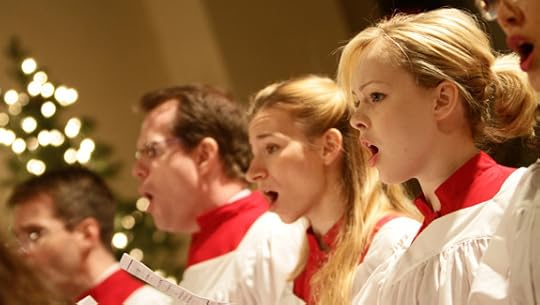
The Renaissance of the Mass Propers | J. J. Ziegler | Catholic World Report
After years of neglect in many American parishes, chanted Mass propers are making a comeback, thanks in part to new online resources.
The publication of the new English translation of the Roman Missal has helped revive interest in the use of chant in the ordinary form of Holy Mass. The Roman Missal includes many more chanted texts than did the previous edition, allowing clergy and people alike to “sing the Mass, rather than merely to sing at Mass,” as Msgr. Andrew Wadsworth, executive director of the ICEL (International Committee on English in the Liturgy) Secretariat, said in a 2010 address.
The new Roman Missal includes a new translation of the General Instruction of the Roman Missal (GIRM), which also has fostered greater interest in chant. CitingSacrosanctum Concilium (the Second Vatican Council’s Constitution on the Sacred Liturgy) and subsequent curial documents, the GIRM states that “the main place should be given, all things being equal, to Gregorian chant, as being proper to the Roman Liturgy.… Since the faithful from different countries come together ever more frequently, it is desirable that they know how to sing together at least some parts of the Ordinary of the Mass in Latin, especially the Profession of Faith and the Lord’s Prayer, according to the simpler settings” (nos. 41-42).
When Catholics think of Gregorian chant at Mass, many tend first to think of chants associated with the Ordinary of the Mass—that is, the parts of the Mass that tend not to vary from day to day—for example, the Kyrie, Gloria, Profession of Faith (Credo), Sanctus, and Agnus Dei.
But there is also another set of chanted prayers at Mass: the propers, that is, five chants that are proper, or specific, to each Mass. The past two years have witnessed a revival of interest in the propers in parishes in the English-speaking world.
March 4, 2013
New: "YOUCAT: Youth Prayer Book"
Now available from Ignatius Press:
by Christoph Cardinal Schoenborn
Related Products:
YOUCAT - Paperback
YOUCAT - Electronic Book Download
YOUCAT Study Guide - Paperback
The internationally best-selling book, YOUCAT - The Youth Catechism of
the Catholic Church, explained to young people the meaning of their
faith in language, style and design that has appealed greatly to them.
Now YOUCAT - The Youth Prayer Book, helps them to live their faith and
deepen their spiritual lives.
The book includes modern, new prayers, along with traditional prayers,
and the time-honored prayers of Holy Scripture. It also gives a lot of
practical advice on how to pray: in the morning, in the evening, and in
between; in sorrow or in joy. The prayer book is illustrated with many
photos of young people from all over the world.
Benedict XVI Honored by Eastern Orthodox Hierarchs
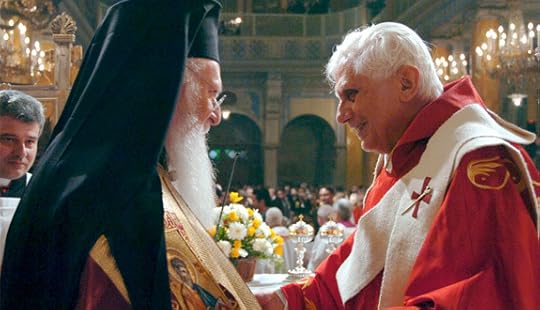
Benedict XVI Honored by Eastern Orthodox Hierarchs | Christopher B. Warner | Catholic World Report
Another look at the Constantinople-Rome schism and a way forward for reconciliation
Following the
announcement of Benedict XVI’s retirement, Ecumenical Patriarch Bartholomew I, the
chief hierarch of the Eastern Orthodox Churches, issued a statement expressing his profound respect and friendship to Benedict. Bartholomew
honored Pope Benedict as an eminent theologian and reaffirmed his desire to keep
dialogue open between Catholic and Eastern Orthodox Christians “for the union
of all.” Benedict and Bartholomew’s friendship has been marked by their common
mission to restore Christian culture to Europe. The Russian Orthodox Church
issued a similar statement thanking Benedict for his efforts to restore
relations between the Vatican and the Moscow patriarchate.
Benedict XVI played
an important role in modern efforts to heal the schism between the Catholic and
Eastern Orthodox Churches. Dialogue began in 1964 when Pope Paul VI and
Patriarch Athenagoras I went together as pilgrims to Jerusalem. The work of
restoring communion was renewed by Pope John Paul II and Patriarch Dimitrios I
during the 1980s. Between 1980 and 2000 the Mixed Commission for Theological Dialogue between the Roman Catholic
Church and the Orthodox Church worked to find common ground that would
lead to further unity. After a period of interruption, Benedict and
Bartholomew reopened the work of the commission in 2007. Pope Benedict signed
a joint statement with Patriarch
Bartholomew in 2006 that renewed their commitment to building Christian unity
and working together for the common good of humanity. Admittedly, progress has
been slow—too slow for some critics, but then long histories of contention
between alienated peoples take a lot of time to heal, Christian or not. Hasty
reconciliation attempts between Rome and the Eastern Orthodox in the past did
not prove successful.
Like the Oriental
Orthodox, the Eastern Orthodox Churches have counterparts who are in full
union with the pope, called Eastern Catholics. The Eastern
Catholic Churches are part of a long-standing effort to reunite Catholics and
Eastern Orthodox Christians. Unsuccessful reunification attempts took place in Lyon
(1274) and in Florence (1438), but the current Eastern Catholic communion was
established by the Union of Brest in 1596. At this council the Metropolitan of
Kiev (in modern Ukraine) united his church to the Pope of Rome, which is why
they are sometimes called “Uniates.” The Ukrainian Catholic Church is the
largest of 22 Eastern Catholic Churches, sui iuris, in the world. The
Ukrainian Catholics even have a cardinal, Cardinal Archbishop Emeritus Lubomyr Husar, who was papabile at the 2005 papal conclave but is no longer eligible
because of his age.
Continue reading at www.CatholicWorldReport.com.
Related articles
 Both Lungs
Both Lungs "Theosis and the Role of the Laity"
"Theosis and the Role of the Laity" "Head East, careless reporter!"
"Head East, careless reporter!"
Now available: "Evangelical Catholicism" by George Weigel
Available at www.ignatius.com:
Evangelical Catholicism: Deep Reform in the 21st Century Church
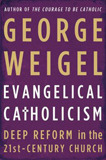
by George Weigel
The Catholic Church is on the threshold of a bold new era in its
two-thousand year history. As the curtain comes down on the Church
defined by the 16th-century Counter-Reformation, the curtain is rising
on the Evangelical Catholicism of the third millennium: a way of being
Catholic that comes from over a century of Catholic reform; a
mission-centered renewal honed by the Second Vatican Council and given
compelling expression by Blessed John Paul II and Pope Benedict XVI.
The Gospel-centered Evangelical Catholicism of the future will send all
the people of the Church into mission territory every day-a territory
increasingly defined in the West by spiritual boredom and aggressive
secularism. Confronting both these cultural challenges and the shadows
cast by recent Catholic history, Evangelical Catholicism
unapologetically proclaims the Gospel of Jesus Christ as the truth of
the world. It also molds disciples who witness to faith, hope, and love
by the quality of their lives and the nobility of their aspirations.
Thus the Catholicism of the 21st-century and beyond will be a
culture-forming counterculture, offering all men and women of good will a
deeply humane alternative to the soul-stifling self-absorption of
postmodernity.
Drawing on thirty years of experience throughout the Catholic world,
from its humblest parishes to its highest levels of authority, George
Weigel proposes a deepening of faith-based and mission-driven Catholic
reform that touches every facet of Catholic life-from the episcopate and
the papacy to the priesthood and the consecrated life; from the renewal
of the lay vocation in the world to the redefinition of the Church's
engagement with public life; from the liturgy to the Church's
intellectual life. Lay Catholics and clergy alike should welcome the
challenge of this unique moment in the Church's history, Weigel urges.
Mediocrity is not an option, and all Catholics, no matter what their
station in life, are called to live the evangelical vocation into which
they were baptized: without compromise, but with the joy, courage, and
confidence that comes from living this side of the Resurrection.
March 2, 2013
The Divine Name and the Mystery of God
| Carl E. Olson
Readings:
• Ex 3:1-8a, 13-15
• Ps 103: 1-2, 3-4, 6-7, 8, 11
• 1 Cor 10:1-6, 10-12
• Lk 13:1-9
When asked why they climb, professional mountaineers often
give varied but interconnected reasons. They mention the challenge of doing
something difficult and demanding, a deepening understanding of themselves,
and, paradoxically, a loss of self-centeredness. In a similar way, those who
spend time living alone in the wilderness can experience the same contemplative
moments leading to a more honest and truthful view of themselves and others.
Mountains and desert play a prominent role
throughout the Bible, not just on a physical plane, but on a spiritual level as
well. Mountains were considered holy, ancient, and eternal; they were where God
often met His prophets and people, as seen in last week’s Gospel reading
describing the Transfiguration. The desert, as harsh as it was, often
represented a place of safety, discipline, and waiting for the promises of God
to come to fulfillment. If the mountain was where God would sometimes reveal
Himself, the desert was where man’s trust in God was tested and increased.
Today’s reading from Exodus describes Moses, many years
after leaving the Pharoah’s court in disgrace, tending sheep in the desert.
Like another shepherd, David, he was toiling in anonymity—until he received the
call of God at Horeb, the mountain of God. Also known as Mount Sinai, this was
the same mountain that would shelter the prophet Elijah when he fled from
Jezebel (1 Kings 19:8) and would, of course, be where Moses received the
Commandments from God (Ex 19-20)
Moses’s encounter with the burning bush was as dramatic as
it was mysterious. At first he was curious and then, upon realizing whose
presence he was in, overcome with awe and fear, hiding his face. In remarking
upon this encounter, the Catechism
provides a simple but urgent lesson perfectly suited for Lent: “Faced with
God's fascinating and mysterious presence, man discovers his own
insignificance” (CCC 208). If there is anything clear about the name uttered
before Moses, it is its mysterious nature: “In revealing his mysterious name,
YHWH (‘I AM HE WHO IS’, ‘I AM WHO AM’ or ‘I AM WHO I AM’), God says who he is
and by what name he is to be called. This divine name is mysterious just as God
is mystery. It is at once a name revealed and something like the refusal of a
name, and hence it better expresses God as what he is—infinitely above
everything that we can understand or say…” (CCC 206).
Although God is mystery, in giving His name He reveals that
He is personal, loving, and faithful. Having revealed His name to Moses, “He
has made known his ways to Moses”, as today’s Psalm proclaims. He desires the
salvation of His people and He provides a means for that salvation. And so
Moses is called from tending the sheep of his father-in-law to tending a new
flock, the people of God, leading them out of Egypt, through the desert, and,
after forty years, to the edge of the Promises Land.
Today’s epistle makes a sacramental connection between the
prophet Moses and the greatest prophet, Jesus Christ. The Israelites had
experienced a sort of baptism (crossing the Red Sea) and Eucharist (miraculous
manna and water); these prefigured the sacraments of the New Covenant
established by Jesus, the New Moses. And yet the Israelites kept succumbing to
idolatry. Saint Paul exhorted his readers in Corinth—who belonged to a church
that was struggling with every type of scandal and sin—to learn from the
mistakes made by the Israelites, for “these things happened as examples for
us…” The lessons of the desert, if not learned and heeded, go to waste when
those who think they are standing securely do not take care of their spiritual
lives.
Lent is a microcosm of the mountains and deserts that
every Christian travels between baptism and death. As the Holy Spirit helps us
to understand ourselves better, we begin to recognize that our worth can be
found in nothing else but the person of Jesus Christ. And He asks that we, in
turn, bear the fruit of His life in us, so that we might give witness to the
mystery of the God who is.
(This "Opening the Word" column originally appeared in the March 11, 2007, edition of Our Sunday Visitor newspaper.)
March 1, 2013
Bishop asks Catholics to affirm Church teaching. Catholics freak out.
by Carl E. Olson | Catholic World Report blog
Bishop Robert Vasa of Santa Rosa, California, has done the unthinkable—nay, he has gone beyond outrageous, to a place so foreign and radical, many Catholics in his diocese are going apoplectic and having complete meltdowns (with low-fat lattes in hand, I presume). Prepare to be shocked:
The Santa Rosa Catholic Diocese is requiring its 200 schoolteachers to sign an agreement affirming that "modern errors" such as contraception, abortion, homosexual marriage and euthanasia are "matters that gravely offend human dignity."
The move is an effort by Bishop Robert Vasa to delineate specifically what it means for a Catholic-school teacher -- whether Catholic or not -- to be a "model of Catholic living" and to adhere to Catholic teaching.
That means means abiding by the Ten Commandments, going to church every Sunday and heeding God's words in thought, deed and intentions, according to a private church document that is an "addendum" to language in the current teachers' contract.
Who does he think he is? Their employer? Their bishop? Um, yeah, he is both, in fact. But, of course, some of the teachers would rather not walk the talk and be adults about the reasonable requirement:
February 28, 2013
The Last of the Giants?
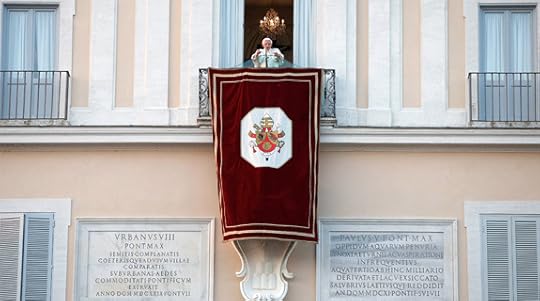
The Last of the Giants? | Carl E. Olson | Catholic World Report
It is too early to judge the pontificate of Benedict XVI, but Joseph Ratzinger's brilliance and holiness cannot be denied.
“Church as ours and ours alone is a
pointless game in a sandbox.” — Fr. Joseph Ratzinger, 1970
This morning, as I watched live video of Pope Benedict XVI
flying from the Vatican to the Castel Gandolfo, I felt, for the first time
really, a deep sense of sadness. As the Holy Father stepped from the
helicopter, his fatigue and frailty appeared quite obvious, even while his gaze
seemed as focused and intent as ever. Then, a few moments later, he appeared on
the balcony to make his final, brief address as pontiff.
“You know that today is different from others”, he said, “as
of eight pm I will no longer be the Supreme Pontiff of the Catholic Church. I
will simply be a pilgrim who is beginning the last part of his pilgrimage on
earth.” Those familiar with the writings Joseph Ratzinger/Benedict XVI will
recall the collection of his essays, Pilgrim Fellowship of Faith: The Church
as Communion (Ignatius Press, 2005),
presented to Cardinal Ratzinger on the occasion of his 75th
birthday. The title and subtitle captures, in just eight words, an essential
focus of the thought and work of Ratzinger. In his final general audience,
given two days ago, Benedict thanked those who had written him notes in recent
weeks, reflecting on the meaning of those gestures of love and support:
In this you can touch what the
Church is—not an organization, not an association for religious or humanitarian
ends, but a living body, a communion of brothers and sisters in the Body of
Jesus Christ who unites us all. Experiencing the Church in this way and being
able to almost touch with our hands the strength of His truth and His love is a
reason for joy at a time when many are speaking of its decline. See how the
Church is alive today!
That passage came to mind as I watched the FOX broadcast of
events at the Vatican and Castel Gandolfo. One of the reporters, who was
obviously a Catholic, was asked a question about the heart of the Catholic
Faith: what is it? She referenced the Church’s rich intellectual tradition and
the Church’s stand for human rights, but she never mentioned the person of Jesus
Christ. This stood out to me because Benedict himself, since announcing his
resignation, has spoken several times about the relationship between Jesus
Christ and his Church, a relationship that is all about a communion of life and
love.
Perhaps the best example of this can be found in his lengthy
and fascinating address to priests and clergy on February 14th,
a talk that might be described as a papal history of Vatican II:
February 27, 2013
On Path to Sainthood, Catholic Priest will Receive Medal of Honor
Information about a soon-to-be-released book from Ignatius Press about an amazing priest, Fr. Emil Kapaun:
More than 60 years after his death as a POW, Fr. Emil Kapaun to receive nation's highest award for bravery
ATLANTA, Feb. 27, 2013 /Christian Newswire/ -- He was a soldier. He was a war hero. He was a priest. His Cause for Canonization is being considered by the Vatican. And now Fr. Emil Kapaun will receive the Medal of Honor from the President of the United States.
Fr. Emil's heroic story will be told in the soon-to-be-released book "The Miracle of Father Kapaun," published by Ignatius Press. One of the most remarkable aspects of his story surrounds the atypical movement of support for both his sainthood cause and his Medal of Honor award. The witnesses to both his sanctity and his bravery have come from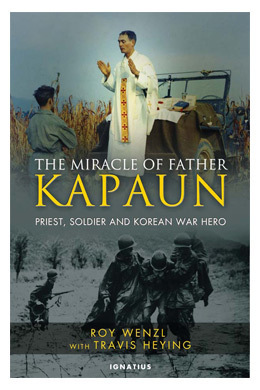 non-Catholics, men of Jewish faith, Muslim faith and Protestant tradition, who served with Fr. Kapaun in battle or in the brutality of conditions where he drew his last breath -- a prisoner of war camp.
non-Catholics, men of Jewish faith, Muslim faith and Protestant tradition, who served with Fr. Kapaun in battle or in the brutality of conditions where he drew his last breath -- a prisoner of war camp.
Fr. Kapaun died as a prisoner of war, and the Korean War veterans who served with him, who were saved by him, have lobbied the Army for more than 60 years to award Kapaun the Medal of Honor for his acts of bravery. They have also spent years petitioning the Vatican to elevate him to Sainthood because of what they witnessed on the battlefield.
Roy Wenzl and Travis Heying, the authors of "The Miracle of Father Kapaun," interviewed the dozens of men who survived the POW camp because of the courageous acts of this young priest. "They said he repeatedly ran through machine gun fire, dragging wounded soldiers to safety. In the prison camp, he shaped roofing tin into cooking pots so prisoners could boil water, which prevented dysentery. He picked lice off sick prisoners. He stole food from his captors and shared it with his starving comrades. Most of all, Kapaun rallied all of them, as they starved during subzero temperatures, to stay alive. When their future seemed hopeless, he persuaded them to hope. Hundreds died in the camps, but hundreds more survived," recounts Wenzl and Heying.
One of the surviving POWs, who will be at the award ceremony in April at the White House, said Fr. Kapaun was murdered by Chinese prison camp guards in 1951 because he openly defied many of the camp rules, including praying the rosary with other prisoners. Mike Dowe, who like dozens of other survivors of the camp has petitioned both Congress and the Vatican for these honors, recalls that by the time Kapaun died, Protestants and men of other beliefs were praying the Catholic rosary and were openly resisting the Chinese torture.
Since opening Kapaun's Cause for Canonization in 1993, there have already been several allegations of miracles -- healings attributed to Fr. Kapaun's intercession that defy scientific explanation. These cures have been witnessed once again by non-Catholics -- doctors, in fact, who can attribute no logical answer to the healing of seriously ill or injured individuals.
The last surviving members of Fr. Kapaun's immediate family and several of the living POWs who served with him will travel to Washington, D.C., for the Medal of Honor award ceremony on April 11.
For more information on "The Miracle of Fr. Kapaun," to request a galley copy of the book, or to schedule interviews with the authors, please contact Kevin Wandra 404-788-1276 or KWandra@CarmelCommunications.com.
Ecumenical Humor Break: "Choose Your Pope!"
Sometimes a short and very funny animated sketch by hilarious Lutherans is worth a thousand (or more) words:
February 26, 2013
Talking "From the Rooftops" about the pontificate of Benedict XVI
This morning I recorded an hour-long radio show with my good friend, Deacon Harold Burke-Sivers, that will air tomorrow, Wednesday, February 27th, on Radio Maria. The program is "From the Rooftops" and it airs at 11:00 am Eastern. You can listen to the program online, and it will also be archived on the show's webpage. Harold and I discuss several aspects of Benedict's work and pontificate, including his many writings, his relationship with Bl. John Paul II, and several other, related topics.
Carl E. Olson's Blog
- Carl E. Olson's profile
- 20 followers




